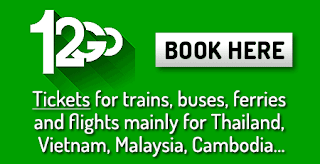
Ha Long Bay, Sa Pa, Hoi An, Son Doong Cave and Mekong Delta offer ironclad guarantees for a highly memorable Vietnam visit.
These places offer overnight cruises and stays in spectacular natural wonders, treks through terraced rice fields, encounters with ethnic minority people and their culture, a trip back in time and a slice of tropical paradise.
And all this is served with consummate traditional Vietnamese hospitality. Hesitate no more. Just pack your bags and come to Vietnam. You will want repeat experiences.
Halong Bay - a natural masterpiece
A UNESCO natural world heritage site, Ha Long Bay is always on top of the must-visit destinations list of any tourist to Vietnam, and for good reason. The magnificent karst topography rising out of emerald green waters, mysterious caves, gorgeous beaches and quaint floating villages make this a place like no other.
An overnight cruise of the Ha Long Bay offers the opportunity to lie on the deck and gaze at the moon and the stars in all their cosmic splendor.
.
.
Hundreds of cruise operators in Ha Long Bay cater to all budgets, from the basic, to the mid-range and the luxurious. The price will vary, depending on the standard and length of stay.
The most popular Ha Long Bay tour options are a day tour, a 2-days-1 night tour or a 3-days-2 nights tour.
Here are some suggestions:
Luxury cruises: Alisa Cruise, Era Cruise, Signature Cruise, Au Co Cruise, or Paradise Cruise.
Deluxe cruises: Paloma Cruise, Royal Palace Cruise, Gray Line Cruise, La Pinta Cruise or Syrena Cruise.
Superior cruises: Garden Bay Cruise, Apricot Cruise, Majestic Cruise, Oriental Sails or Bai Tho Junk.
Sa Pa - a singular trekking experience
Located at an altitude of 1,600 m above sea level, Sa Pa, with picturesque small towns and cool climate year-round, is a dreamy tourism destination.
It has many famous attractions like the Fansipan Peak - the roof of Indochina, Ham Rong Mountain, Sa Pa Ancient Church and the villages of the Red Dao people. All this beautiful scenery comes with delicious local dishes like salmon hotpot, grilled meat, and rice cooked in a bamboo section.
Another awesome experience that Sa Pa offers is a trekking journey from the town to the villages of Hau Hao Commune.
.
.
A typical trek starts from Sa Pa Town at around 8:30 am and follow the village trail cross many hills. In about 30 minutes after, the town starts getting smaller and smaller.
At around 12:30 pm, have lunch at a local restaurant for a while and continue on the road.
Upon arrival at the homestay in Hau Thao Village at about 4:30 pm, visitors can rest and enjoy the dishes prepared by the Red Dao people.
Hoi An - a step back in time
Another one of Vietnam’s most attractive tourist destinations is Hoi An in central Vietnam. It presents an unusually rustic and poetic picture with most buildings still standing as they did 100 years ago.
The town has centuries old structures like the famous Pagoda Bridge, diverse architecture, distinctly delicious cuisine, and many cultural attractions including traditional customs, religious rituals, folk art and festival celebrations.
.
.
The best time to travel to Hoi An is from February to April when it rains less, and the climate is pleasant. Summer at high temperatures is also a good time to visit. The rainy season lasts from October to November.
An ideal day to be in Hoi An is the 14th day of the lunar month - the full moon. The town glows throughout with red lanterns, an unforgettable sight.
Son Doong Cave - a world unto itself
First discovered by a local in the 1990s and officially rediscovered in 2009, Son Doong Cave - currently the largest in the world – is a world unto itself. It has surprised the world with its incredible size and unique features.
The cave, located in the Phong Nha - Ke Bang National Park in Quang Binh Province, is one of the most amazing places in the world and a UNESCO world heritage site. Its vastness gives visitors the sense of being on another planet.
Over 6 km long and several cave arches up to 200 m high and 150 m wide, Son Doong is large enough to accommodate a New York 40-story skyscraper.
.
.
With a total estimated volume of 38.5 million cubic meters, Son Doong Cave easily overcomes Deer Cave in Malaysia to become the largest natural cave in the world.
If, as assumed, Son Doong links up with Hang Thung Cave with a volume of about 1.6 million cubic meters; it will further consolidate its position as the world's largest cave, with many of its mysteries yet to be fully explored.
Mekong Delta - tropical delights galore
With its interlacing river systems, vast paddy fields, fruit laden orchards and floating markets, the Mekong River Delta is another highly favored destination among both local and international visitors.
The best way to discover this exciting region is to take a Mekong cruise on its many waterways. Topping the experience of floating quietly and gently through water coconut groves and mangrove forests is the region’s fresh and brackish water cuisine, traditional music, quaint villages to explore on bicycles, boating, drinking honeyed tea and/or local liquor, and buying beautifully made handicraft items of bamboo and coconut stems.
The delta’s floating markets are not to be missed, be it Cai Be, Cai Rang, Phung Hiep, Nga Nam, Nga Bay or Tra On. The daily life of local people, including buying and selling all kinds of agricultural, aquacultural and horticultural produce, happens at a hectic pace, and is fed with a stable supply of food and drinks by floating eateries.
































